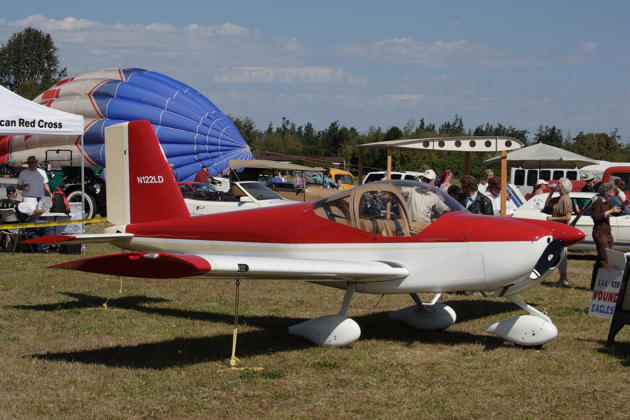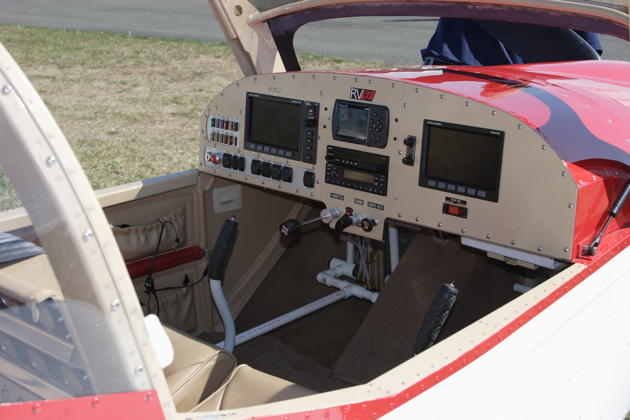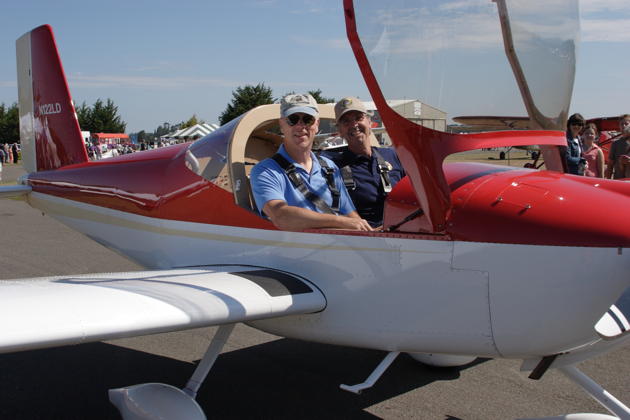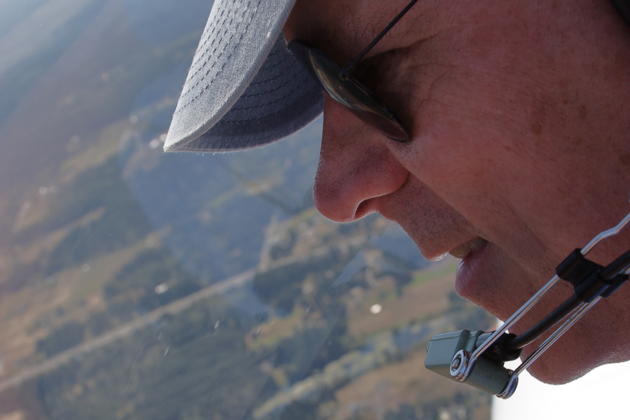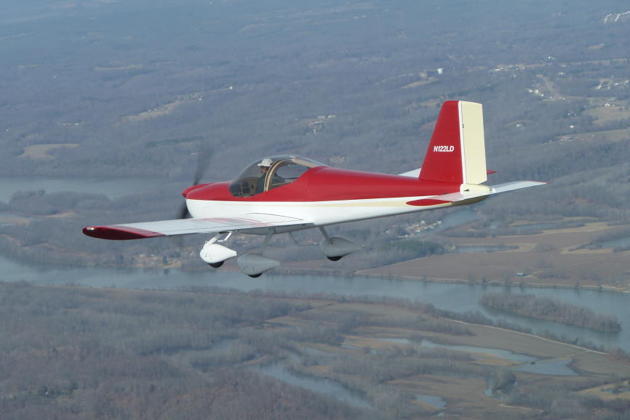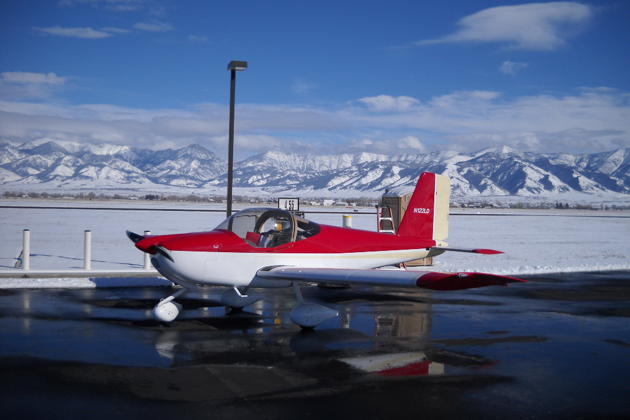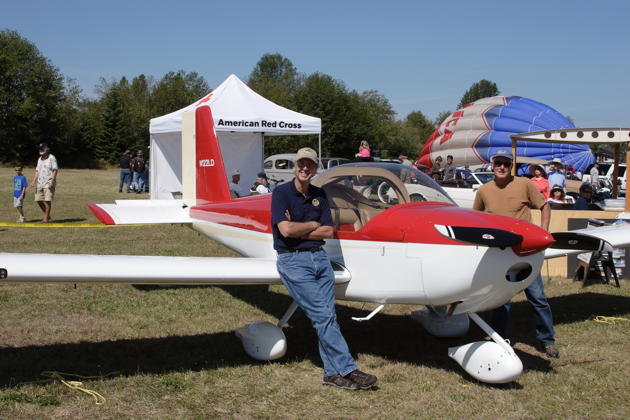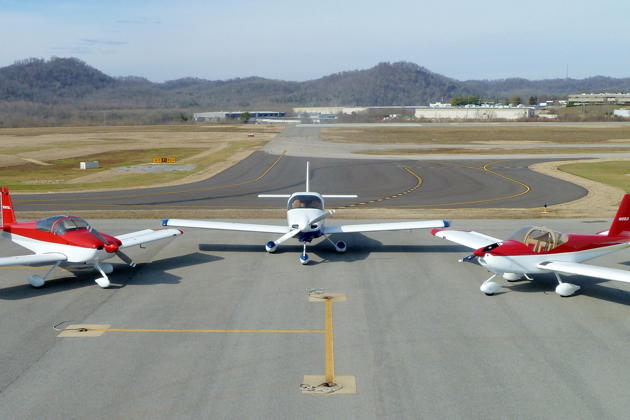FlightLog Archive
∟Aircraft Flown
Flying the RV-12 - Sep 2013
In February 2013, Dan Masys provided chase services in his new RV-12 during the first and second flights at Sequim Valley airport for Paul Kuntz and me in Paul's Pipistrel Sinus. Dan's RV-12 was able to closely match the speed range of the Sinus, providing for effective chase services, including some great air-to-air photographs of our first flights in the Sinus.
Dan offered me a flight in his RV-12, but at the time I was heavily engaged in getting the Sinus through its early checkout flights. About that time, I found out that Dan's RV-12 was actually the third RV that Dan and his wife Linda had built, the first being an RV-7A, the second an RV-10, with the RV-12 the latest in their RV family. I'm very interested in potentially building an RV-10, so I talked to Dan about taking a familiarization flight in his RV-10 whenever we could arrange it. I've been able to check out Dan's RV-10 on the ground at Boeing Field, but haven't been able to fly it yet.
In September, Mary and I were spending the weekend at Paul and Mary Kuntz' beautiful home in Sequim, adjacent to the Sequim Valley airport. One of the reasons we were there was to enjoy the Sequim Air Affaire, and check out the aircraft on display. As I toured the resident and visiting aircraft, I noticed Dan's beautiful RV-12 parked on display near Paul's Sinus. After giving Paul a Flight Review in his Sinus earlier in the day, I caught Dan showing off his RV-12 to admiring spectators. Dan and I talked about scheduling time together for an RV-10 evaluation, but today was too busy with the airshow in progress and the -12 on display. After seeing the Sinus and other aircraft in the air, however, Dan noted that the RV-12 "looked like it really wanted to fly", and he asked if I wanted to take a familiarization flight. Ask no more...!
Dan conducted a pre-flight in the display area, and we easily pulled the RV-12 onto the taxiway. I was amazed at the light weight, even fueled, and the easy maneuvering accomplished by just pulling on the propeller. The RV-12 has an empty weight of just over 700 pounds, and it maneuvered on the ground like it weighed even less.
As we waited for the oil temperature to rise on the Rotax 912 engine, I got a feel for the RV-12's cockpit layout and control placement. I loved the placement and feel of the stick, and got a feel for the required rudder inputs by making small S-turns down the runway, as we back-taxied in preparation for takeoff. Dan's RV-12 is built to E-LSA (Experimental-Light Sport Aircraft) requirements, necessitating that it be built 100% to the specifications laid out by Van's aircraft. I noticed that the trim switch was panel-mounted, vs. stick-mounted, which I prefer. To obtain his E-SLA certificate, Dan had to build his with a panel mounted trim switch, even though he also prefers a stick-mount.
At the end of the runway turnaround area for runway 27 at Sequim Valley, we performed a short run-up, and satisfied that we were ready, Dan handed me the controls for takeoff. I throttled up, once we lined up on the centerline, and the RV-12 accelerated at a very respectable rate. As the flight controls became more responsive, I needed only slight rudder inputs to keep us tracking straight, and applied a slight amount of back stick to reward us with liftoff and a positive climb. Especially since I had just flown the Pipistrel Sinus taildragger, I was quite impressed with excellent visibility while on takeoff and climb out. At full throttle on the climb out, I had to increase my pitch attitude to get toward the best rate of climb speed, which is around 75 knots.
While in the climb out, I turned toward the Olympic Mountains and more open terrain, enjoying the very crisp roll response to stick inputs. I leveled off, and tried a few 360 degree turns, and with my pitch references still not solidified, I noticed I easily climbed even with the power back. Throughout the maneuvering the Rotax engine was smooth and relatively quiet. I slowed to attempt a power-on stall, and Dan's RV-12 just kept climbing, finally allowing a very mild stall, with immediate recovery by relaxing the back stick pressure. We cruised around the Sequim local area, enjoying effortless flying and great visibility. I could easily see how an RV-12 could become a fun local cruiser, and that you just might have to yank and bank every once in awhile, just because the airplane flies so responsively!
We were a bit high to directly enter the pattern with out losing some altitude, so I used a combination of throttle reduction and slipping to lose altitude. The RV-12 slips easily, and I had no problem maintaining desired airspeed as we increased our descent rate for pattern entry. As in the rest of the flight regime, visibility in the pattern is excellent - you never lose sight of the runway or traffic in the pattern. Although the flaperons lower the stall speed, they don't seem to provide much drag. I flew at 70 knots on base with the Rotax throttled back and descending around 4-500 fpm. I was aiming to cross the fence at around 60 knots, but settled on 62 knots on a decent glideslope. With the great over-the-nose visibility, I just started a slight flare at around 15 feet and the RV-12 greased itself onto the runway. Not only do RVs fly well, they land well also!
Let's see...good climb capability, great handling and visibility, good looks and economical to operate. Maybe I should build one after the RV-10...? Thanks again, Dan for the opportunity to check out your RV-12. I'm very pleasantly surprised after flying Van's Light Sport representative!
 KASPRZYK
KASPRZYK